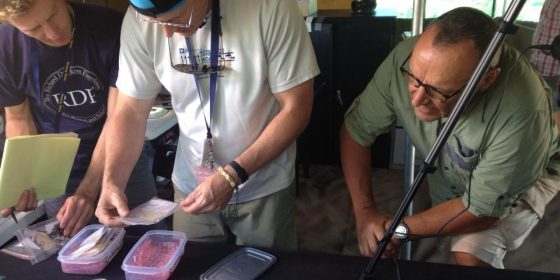Overview
Research in the Paleoanthropology Lab focuses on the following interrelated areas:
1. Adaptive evolution in early Homo. What do the morphological differences between species of early Homo and species of Australopithecus tell us about adaptive changes in behavior and physiology at the time of the emergence of Homo, and what is the adaptive significance of morphological variation between species of early Homo?
Work in this area has been primarily focused on the description and comparative functional-morphological analysis of 1.98 million-year-old fossils of Australopithecus sediba and 335-236,000-year-old fossils of Homo naledi, and on the functional morphology of the locomotor skeleton in Homo erectus.
2. Ecology, energetics, and adaptive strategies of archaic species of the genus Homo (especially the Neandertals of Europe and western Asia, but also including and Middle Pleistocene archaic humans of Africa) and early members of our own species.
Research in this area is currently centered on analyzing morphological and archeological data pertaining to mobility patterning and the evolution of human subsistence strategies across the Middle and Late Pleistocene.
3. The evolution of subsistence technology, especially the origins of true long-range projectile weaponry. Of special interest are the relationships between projectile weaponry, cumulative technological evolution (or what has been called “cultural ratcheting”), and the demographic and geographic expansion of early modern humans. Work in this area includes comparative functional-morphological studies of upper limb bones in different human groups, analysis of ethnohistoric data on foraging peoples, and experimental work on primitive technology.
4. The community ecology of humans and large-bodied carnivores in Pleistocene Europe and Africa. This work is currently focused on the nature of the competitive interactions between the Neandertals of Europe and the large carnivores with which they lived.
Duke University anthropologist Steven Churchill shows replica casts of two specimens of Australopithecus sediba, a new species of hominin being described in the September 8, 2011 edition of Science. These two individuals have been dated at 1.977 million years ago, and have features of both the Australopithecus lineage, like Lucy, and the more modern Homo lineage, which includes us. Their remarkably complete skeletons indicate they ate a better diet and probably made use of stone tools, though their brains are still relatively small. They walked upright, but were still adept at tree-climbing.



